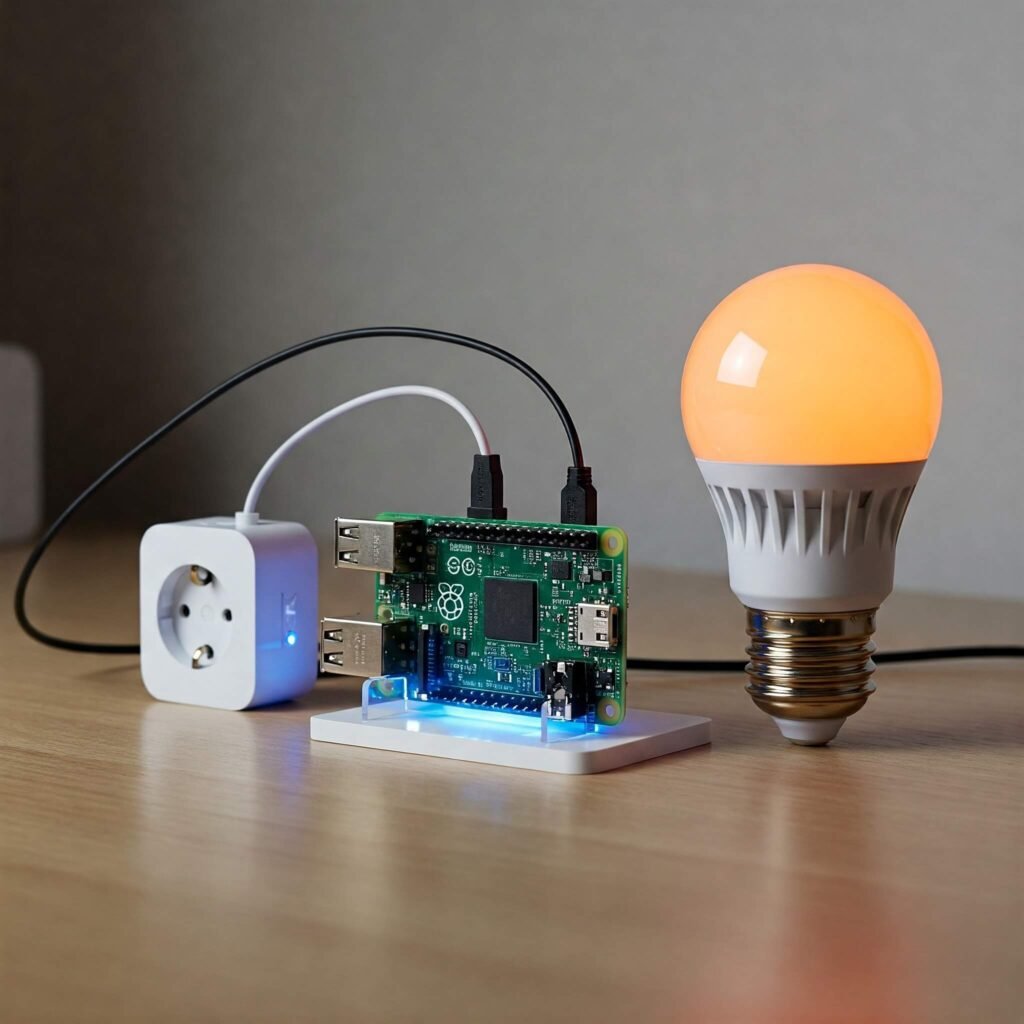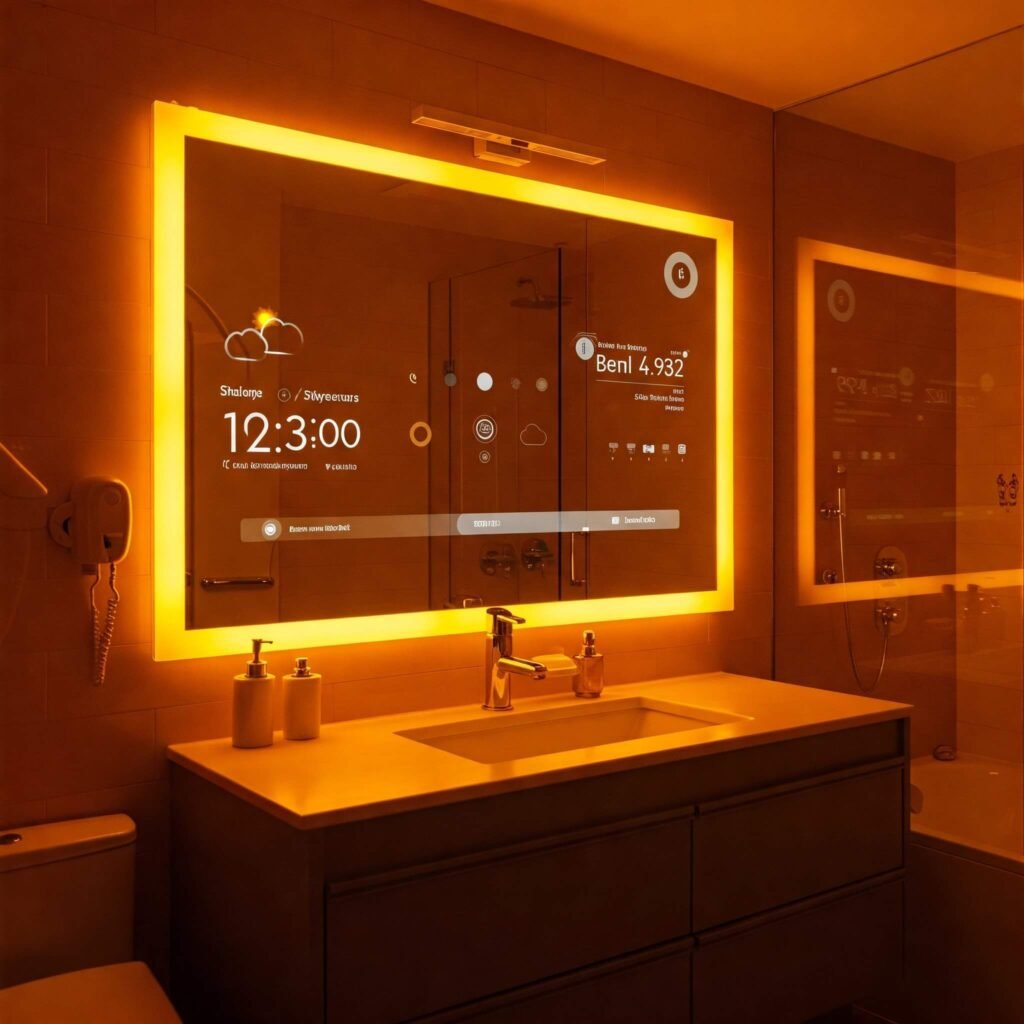DIY home automation projects are a fun and affordable way to transform your home into a smart, connected space in just a weekend. With tools like smart plugs, Raspberry Pi, and voice assistants, you can create custom automations without breaking the bank. This guide walks you through five DIY home automation projects that are perfect for beginners and tech enthusiasts alike, complete with step-by-step instructions and insights from sources like CNET and Instructables. Whether you want to automate lights or build a smart mirror, these projects will kickstart your smart home journey in 2025. Need budget-friendly device ideas? Check out our guide to smart homes on a budget.
Why Try DIY Home Automation?
DIY smart home projects let you customize your home’s tech while saving money compared to pre-built systems. According to Wired, 2025, DIY automation can cut setup costs by 30-50%. Benefits include:
- Affordability: Use budget devices like smart plugs (~$15).
- Creativity: Build unique solutions tailored to your needs.
- Learning: Gain tech skills with hands-on projects.
Here are five DIY home automation projects you can complete in a weekend.

1. Smart Plug Automation: Simple DIY Home Automation Project
Turn any appliance into a smart device with a TP-Link Kasa Smart Plug Mini in this beginner-friendly DIY home automation project.
How to Build a Smart Plug System
- Materials: Kasa Smart Plug Mini (~$15), smartphone, Wi-Fi (TP-Link).
- Steps:
- Plug the smart plug into an outlet.
- Download the Kasa app and connect to Wi-Fi.
- Schedule appliances (e.g., a fan) or pair with Alexa for voice control.
- Time: ~30 minutes.
Example: A DIYer automates a coffee maker to start at 7 AM, saving morning prep time.
Cost: ~$15.
2. Smart Lighting Setup: Budget DIY Home Automation Project
Create a custom lighting system with Wyze Bulb Color for a quick DIY home automation project that adds ambiance.
Steps to Create Smart Lighting
- Materials: Wyze Bulb Color (~$13), Wi-Fi, optional Alexa/Google Assistant (Wyze).
- Steps:
- Screw the bulb into a lamp or fixture.
- Connect to the Wyze app via Wi-Fi.
- Set schedules or color changes (e.g., warm tones at night).
- Time: ~45 minutes.
Example: A family sets bulbs to dim automatically at 8 PM, creating a cozy evening vibe. Want more beginner tips? See our smart home setup guide.
Cost: ~$13-$26 (1-2 bulbs).

3. Raspberry Pi Smart Home Hub: Advanced DIY Automation
Build a custom smart home hub using a Raspberry Pi for a versatile DIY home automation project.
How to Set Up a Raspberry Pi Hub
- Materials: Raspberry Pi 4 (~$35), microSD card, Wi-Fi (Raspberry Pi).
- Steps:
- Install Home Assistant on the Raspberry Pi (follow Instructables).
- Connect smart devices (plugs, bulbs) to the hub.
- Create automations (e.g., lights on at sunset).
- Time: ~4-6 hours.
Example: A tech enthusiast uses a Pi to control lights and a thermostat, saving $100 over commercial hubs.
Cost: ~$50.
4. DIY Smart Motion Sensor: Budget Security Solution
Add motion-based automation with a DIY smart sensor using an Adafruit PIR sensor for a weekend project.
Building a Smart Motion Sensor
- Materials: Adafruit PIR Sensor (~$10), Raspberry Pi, wires (Adafruit).
- Steps:
- Connect the PIR sensor to the Raspberry Pi (see CNET, 2025).
- Program it to trigger lights or alerts via Home Assistant.
- Mount in a hallway or entryway.
- Time: ~3-4 hours.
Example: A DIYer sets a sensor to turn on porch lights when motion is detected, enhancing security.
Cost: ~$20 (with Pi).
5. DIY Smart Mirror: Creative Home Automation
Build a smart mirror with a Raspberry Pi and two-way mirror for a showstopping DIY home automation project.
How to Create a Smart Mirror
- Materials: Raspberry Pi (~$35), two-way mirror (~$50), monitor (~$50) (Tom’s Guide, 2025).
- Steps:
- Install MagicMirror software on the Pi.
- Assemble the mirror and monitor in a frame.
- Display weather, calendar, and smart home controls.
- Time: ~8-10 hours.
Example: A homeowner displays daily schedules and controls lights via their smart mirror. Curious about other devices? Check our top smart devices for 2025.
Cost: ~$150.

Tips for Successful DIY Home Automation
To nail your DIY home automation projects:
- Start Simple: Begin with plugs or bulbs to build confidence (Wired, 2025).
- Plan Ahead: Gather all materials before starting.
- Test Thoroughly: Ensure devices connect to Wi-Fi or hubs.
- Secure Devices: Use strong passwords for apps and networks.
Pro Tip: Join forums like Reddit’s r/homeautomation for troubleshooting tips (GeeksforGeeks, 2025).
Benefits of DIY Home Automation
DIY smart home projects offer:
- Cost Savings: Save 30-50% compared to commercial systems (CNET, 2025).
- Customization: Tailor automations to your lifestyle.
- Skill Building: Learn coding or electronics basics.
Data Point: 60% of DIY smart home users report improved convenience within a week (PCMag, 2025).
Challenges of DIY Home Automation
DIY projects can have hurdles:
- Learning Curve: Coding or wiring may be tricky for beginners.
- Time Investment: Complex projects (e.g., smart mirrors) take hours.
- Compatibility: Ensure devices work with your hub or platform.
Solution: Follow tutorials from trusted sources like Instructables and start with simple projects (Instructables).
Conclusion: Start Your DIY Home Automation Journey
DIY home automation projects make it easy to create a smart home in a single weekend, from smart plugs to custom Raspberry Pi hubs. With affordable tools and a bit of creativity, you can automate lights, enhance security, or build a smart mirror without breaking the bank. Follow these projects, integrate with Alexa or Google Assistant, and transform your home in 2025. Ready to begin? Explore more ideas in our smart home setup guide.
































